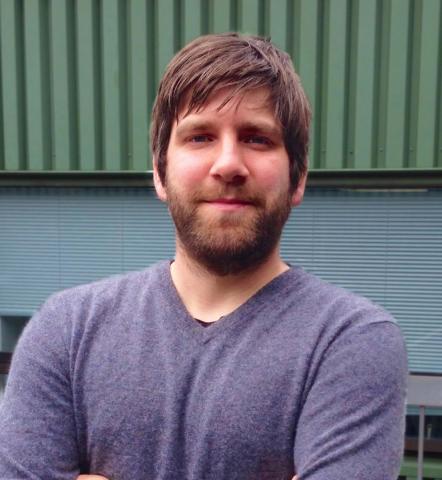
Even if you know little else about medicine and biology, the diagnosis of “Stage 4 cancer” is sure to provoke strong feelings. But that may not be the case much longer, thanks to the increasing availability of alpha-emitting isotopes and talented researchers like University of Victoria Ph.D. student Jason Crawford who bridge the gap between research and application.
Alpha-emitting isotopes are becoming recognized for their incredible potential to treat rapidly spreading - or metastasized - cancer and save the lives of patients. Approved by Health Canada in December 2013 and already in use worldwide, the isotope Radium-223 (Ra-223) became a game changer for people living with Stage 4 prostate cancer. It reduced pain and increased both longevity and quality of life.
Ra-223 is just one isotope of a group that could change the prognosis for a patient with progressed cancer. These alpha-emitting isotopes target even the tiniest tumours and irradiate them from the inside out. The most promising application of alpha therapy is as a weapon against micrometastatic disease. As a cancer progresses, tumours start to spread all over the body, and are small at first. Conventional therapy doesn’t allow you to target all of these tiny clusters, which can turn into malignant tumours. Alpha therapy is distinct in that the isotope emits short-range radiation, and in theory would hit the cancer cells from inside the tumour, leaving the healthy cells untouched. However, research on alpha emitters is still in its infancy, primarily due to their limited availability.
Jason Crawford, a Ph.D. student at the University of Victoria, wants to see that change. Last year Jason and his supervisor, TRIUMF emeritus researcher Dr. Thomas Ruth, won a Canadian Cancer Society Innovation Grant to support research at TRIUMF on Astatine-211 (At-211), another alpha-emitting isotope. Their research has two branches: looking at the possibility of At-211 as a cancer treatment, as well as a new method for producing At-211 that would increase its availability.
The first step in determining the efficacy of a treatment such as At-211 is developing a consistent evaluation system that can be used in various clinical studies. Since last year, Crawford and Dr. Ruth have made advances in creating this system. They made the first scan using the isotope At-209, which follows the same path in the body as At-211 but it also sends a detectable signal to the scanner, thereby providing a visible picture of the isotope’s behavior, in vivo. In pre-clinical studies, the duo successfully measured the bio-distribution of At-209 both administered as a free isotope and labelled to a cancer-targeting antibody.
“If you can image the distribution of At-211 using a surrogate [for example, At-209], you can then quantify the dose deposition of alpha particles, and better understand what’s happening to each patient on a very patient-specific basis,” explains Crawford.
Crawford and Dr. Ruth are developing a unique methodology that would allow researchers to look at more complicated questions in targeted alpha therapy. Once they determine the best way of imaging with At-209, similar methods can be used for evaluating other alpha-emitting compounds that have the potential to be used as a therapy.
“TRIUMF has resources that give us the ability to produce and separate specific isotopes, such as the ISAC facility, which are only available in a handful of centres around the world, and we’re using that to evaluate some unexplored isotopes,” says Crawford. “Right now, we see At-211 as one of the best candidates for targeted alpha therapy, moving forward.”
Crawford explains that the beauty of using radioisotopes is that we can truly quantify the damage that is occurring to the tumor and relate that to the efficacy of a treatment. “With radioisotopes, we can see the action. Once we understand that behaviour, we can hopefully make advances with the therapy.”
However, the research that is needed to harness the potential of alpha emitters can’t happen without affordable, widespread access to the isotopes. Crawford and Ruth would like to find ways of increasing the availability of At-211 and other isotopes across Canada and worldwide. The current methods of production are simply too expensive.
“I first began work with At-211 back in 1978 while I was at Brookhaven National Lab collaborating with researchers at Harvard University,” says Dr. Ruth. “Since moving to TRIUMF in 1980, I have not had access to At-211 so it has been a wonderful opportunity to have Jason want to pursue this line of line of research. His enthusiasm has driven this project.”
“This year, we’ll leverage infrastructure here at TRIUMF – the ISAC facility - to produce At-211 in a unique way, and evaluate this method of production for enabling more widespread distribution,” says Crawford.
The results of Crawford and Dr. Ruth’s research will pave the way for new advancements in late-stage and metastasized cancer treatment. Thank you to Crawford and Dr. Ruth for taking the first steps in this new area of research, and congratulations on your progress thus far!
Photo: Jason Crawford at TRIUMF.
Photo and story by Jacqueline Wightman, Multimedia Communications
